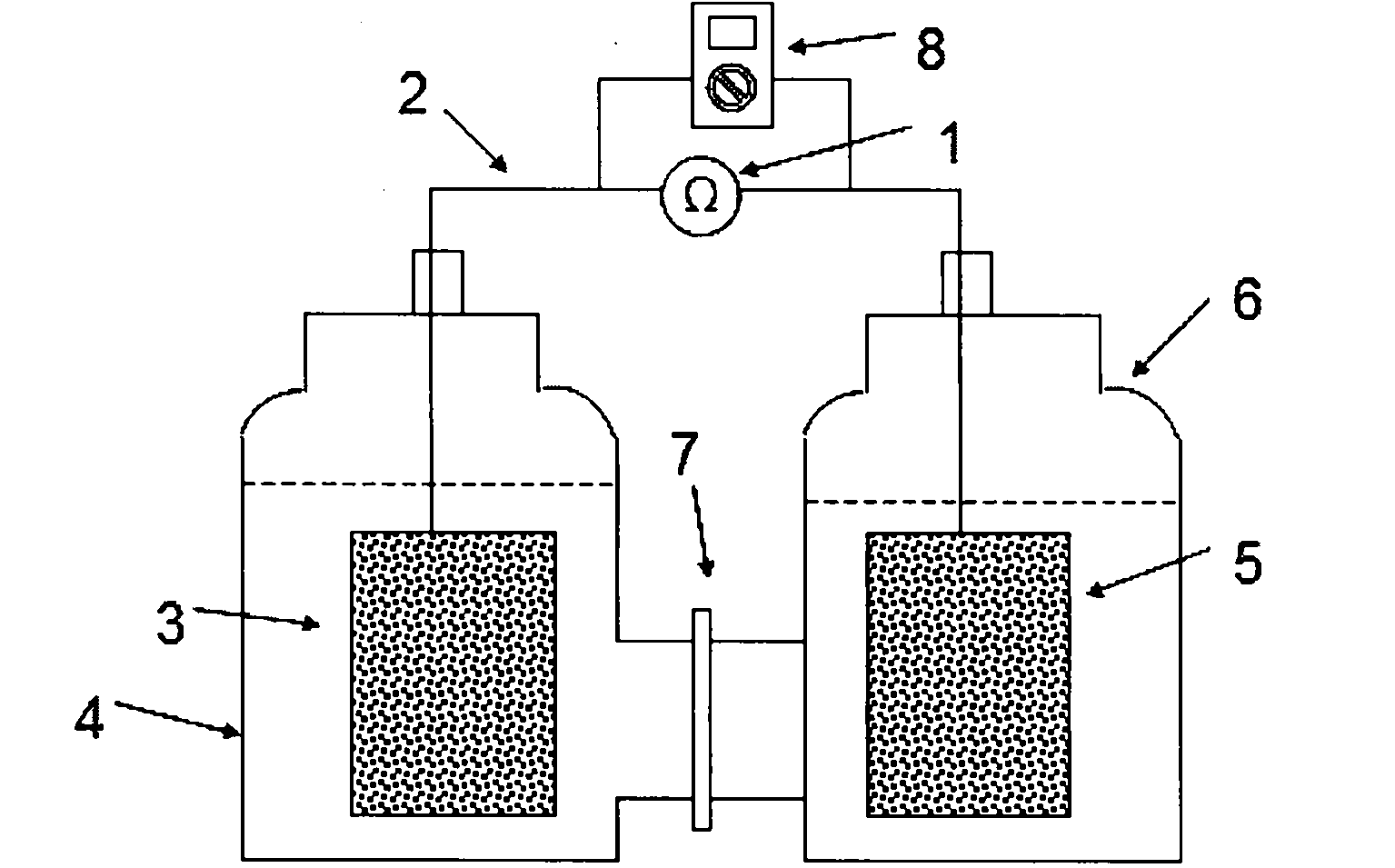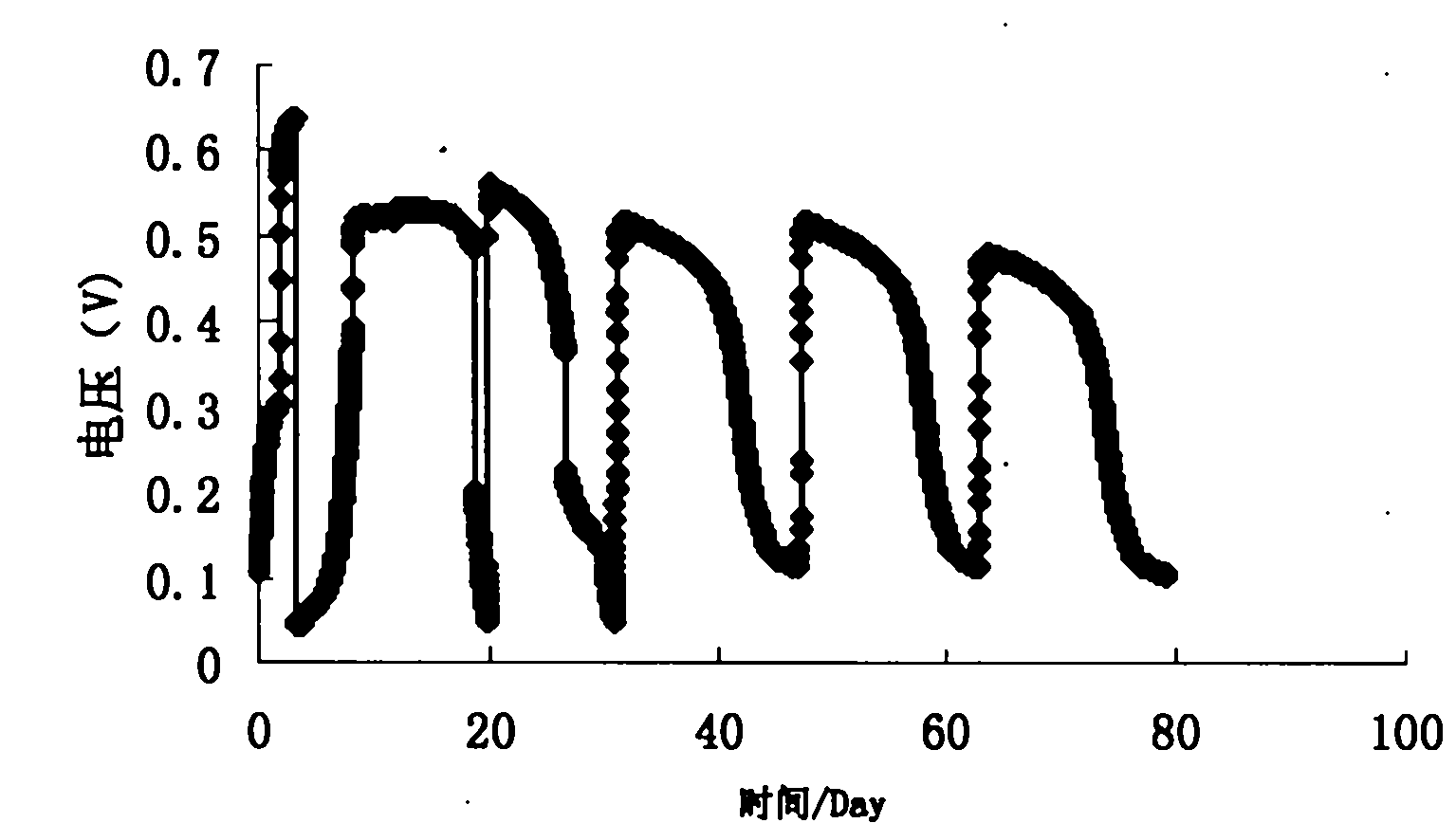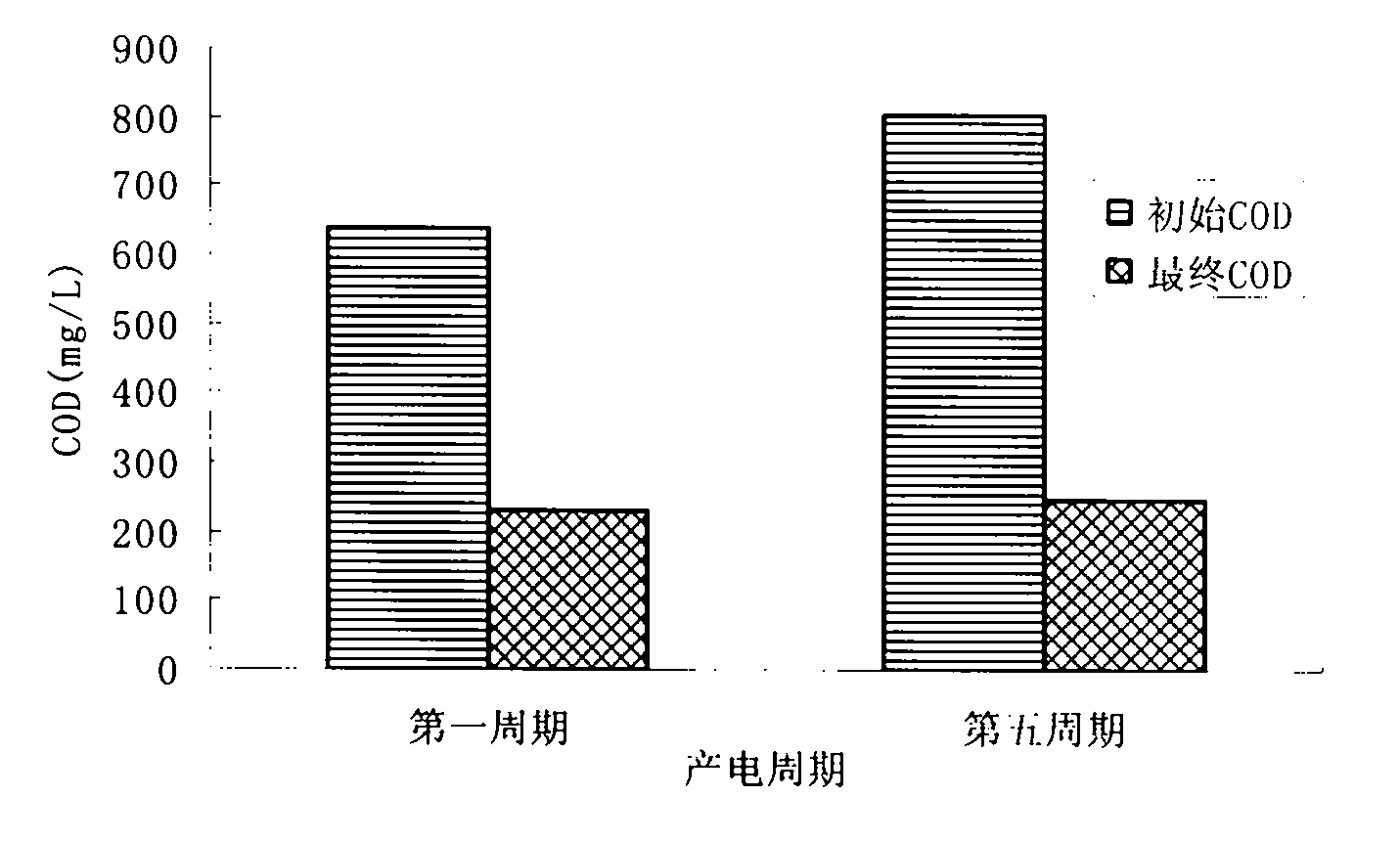Microbial fuel cell and application thereof in degradation of polybrominated diphenyl ethers
A polybrominated diphenyl ether and fuel cell technology, applied in biochemical fuel cells, fuel cells, circuits, etc., can solve problems such as lack of degradation of polybrominated diphenyl ethers, and achieve the effects of good environmental pollution treatment, resource utilization, and good application prospects.
- Summary
- Abstract
- Description
- Claims
- Application Information
AI Technical Summary
Problems solved by technology
Method used
Image
Examples
Embodiment 1
[0021] Step 1: Build a microbial fuel cell, such as figure 1 As shown: the anode chamber 4 and the cathode chamber 6 are made of glass, with a volume of 250 ml, separated by a Nafion 112 selective proton permeable membrane 7 .
[0022] Step 2: Put the anode electrode 3 and the cathode electrode 5 into the anode chamber 4 and the cathode chamber 6 respectively, and the electrode material of the anode electrode 3 and the cathode electrode 5 is 2.5×4cm 2 Carbon paper (Toray, Japan), connect the anode electrode 3 and the cathode electrode 5 through the external circuit wire 2, connect the external resistance 1 of 1000 ohms to the external circuit wire 2 to reflect the electricity production situation, and connect the multimeter 8 to collect the electricity production data .
[0023] Step 3: Add 200ml culture solution in the anode chamber, its composition is: improved M9 inorganic salt solution (5.7mmol / LNa2HPO 4 12H 2 O, 3.3mmol / LKH 2 PO 4 and 18.0mmol / LNH 4 Cl), mineral ele...
PUM
 Login to View More
Login to View More Abstract
Description
Claims
Application Information
 Login to View More
Login to View More - R&D
- Intellectual Property
- Life Sciences
- Materials
- Tech Scout
- Unparalleled Data Quality
- Higher Quality Content
- 60% Fewer Hallucinations
Browse by: Latest US Patents, China's latest patents, Technical Efficacy Thesaurus, Application Domain, Technology Topic, Popular Technical Reports.
© 2025 PatSnap. All rights reserved.Legal|Privacy policy|Modern Slavery Act Transparency Statement|Sitemap|About US| Contact US: help@patsnap.com



